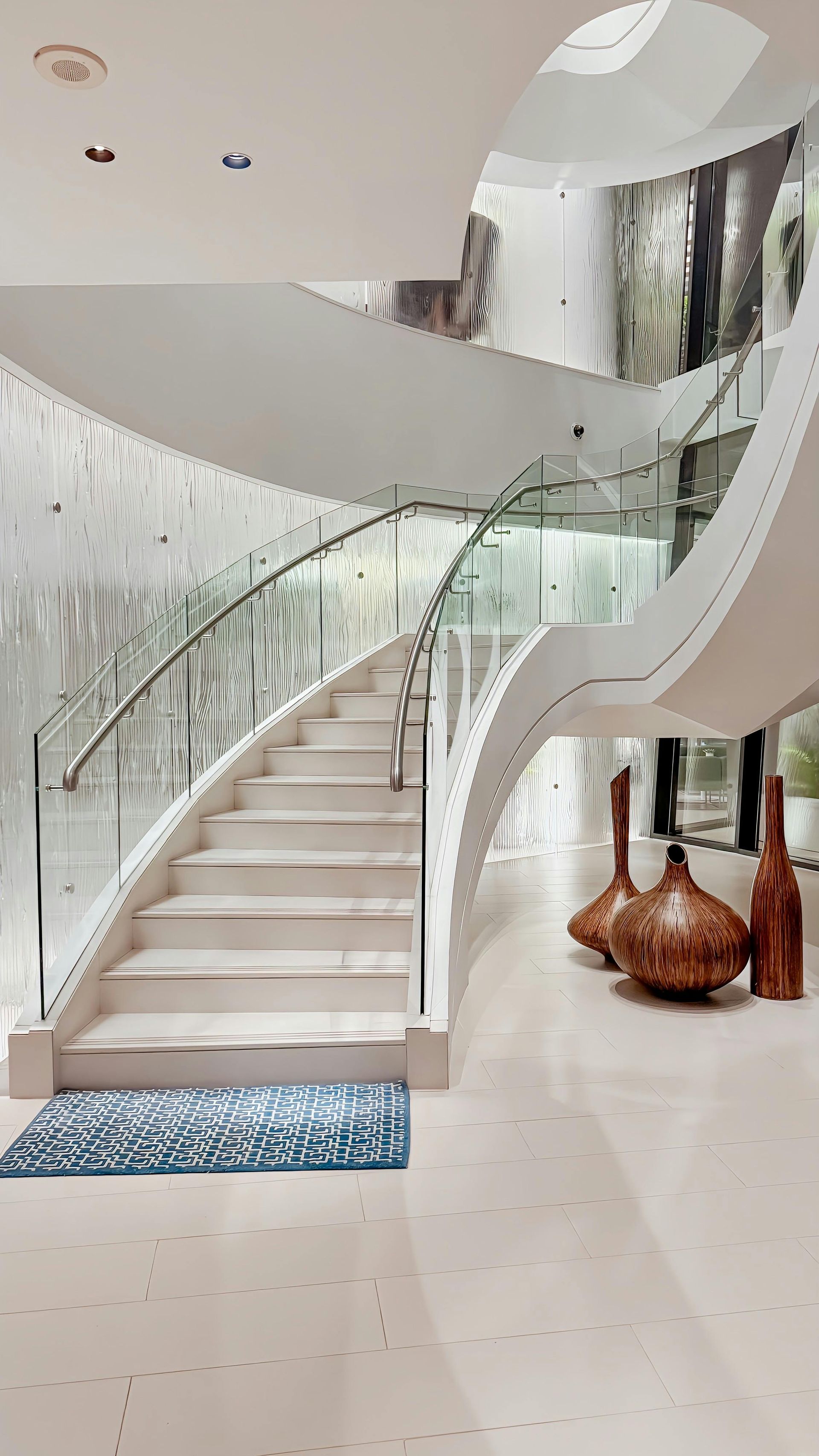Commercial-to-residential conversion has become one of the defining themes of the UK property market in 2025. As high street retail, underused office blocks, and redundant commercial premises continue to lose value in their original form, developers are increasingly repurposing these assets into high-demand residential or mixed-use schemes.
Lenders have recognised the opportunity — but also the complexity. While conversion projects can offer attractive margins, they also carry heightened planning, valuation, and build risks. The appetite for funding such schemes remains strong, but only when structured correctly and supported by experienced professionals who can demonstrate deliverability.
At Willow Private Finance, we’re seeing sustained demand for
office-to-resi and retail-to-resi funding, particularly under the UK’s evolving Permitted Development (PD) rights. The key in 2025 is not whether lenders will support conversions, but
how they price, structure, and mitigate the risks involved.
For further reading, see
Phased Development Finance in 2025: How Lenders View Multi-Stage Builds and
Stretch Senior Finance in 2025: Understanding Your Leverage Options.
Market Context in 2025
The market for commercial conversions has strengthened considerably over the past 18 months. Remote working has permanently reduced demand for traditional office space, while retail restructuring continues to leave prime and secondary units vacant. According to government data, more than 7,000 office-to-residential conversions were initiated in England in 2024 — a figure expected to rise again this year.
Permitted Development (PD) rights remain a major driver of this trend. Developers can convert certain commercial buildings into residential use without full planning permission, provided they meet size, location, and design criteria. However, local authorities are increasingly using Article 4 Directions to restrict these rights in central areas, making lender due diligence on planning status more stringent.
At the same time, the residential rental market continues to experience record demand. This combination of oversupplied commercial stock and undersupplied housing has created a perfect environment for well-structured conversion projects. The challenge is not demand — it’s proving that the building can be converted efficiently, cost-effectively, and with minimal planning risk.
How Lenders View Commercial Conversions
Lenders categorise conversions as higher risk than standard ground-up developments because existing structures often conceal unknowns. Structural integrity, service installations, asbestos, or design limitations can all increase costs once work begins. As a result, lenders apply conservative assumptions when assessing viability.
In 2025, most lenders expect developers to present
a full building condition survey, detailed cost plan, and evidence that professional teams — including architects and structural engineers — have verified the feasibility of the proposed works. Even under PD, lenders want reassurance that local planning conditions, parking requirements, and noise standards have been considered.
Loan-to-Cost (LTC) ratios for conversions typically range from
65% to 75%, depending on the borrower’s experience and the level of refurbishment required. Projects that involve structural change or full reconfiguration may attract lower leverage than light-touch refurbishments.
Crucially, lenders now differentiate between
viable conversions — where the existing structure supports a straightforward transformation — and
complex redevelopments that are effectively new builds behind retained façades. The former attract mainstream development funding, while the latter are treated as high-risk construction projects.
Willow Private Finance’s role is to clarify this distinction early, ensuring lenders see the project for what it truly is — and structuring finance accordingly.
Permitted Development and Planning Considerations
Although PD rights simplify the process, they do not eliminate planning oversight altogether. Developers must still secure prior approval from local authorities, addressing issues such as transport impact, flood risk, contamination, and design.
In 2025, lenders are placing greater emphasis on
planning certainty. Many now require evidence of either an approved PD certificate or a detailed statement from a planning consultant confirming eligibility before issuing credit terms. Projects that proceed on speculative assumptions about PD qualification face significantly higher pricing and lower gearing.
Where Article 4 Directions are in place, lenders demand full planning permission. In such cases, developers should expect longer timelines and higher professional fees, both of which must be reflected in funding schedules.
Importantly, lenders also look at
exit liquidity — whether completed units will meet mortgage lender and valuer criteria. For instance, micro-apartments or converted offices with limited natural light may struggle to attract end-buyer mortgages, reducing lender confidence in the exit plan.
Valuation and GDV Challenges
Valuing conversion schemes is more complex than standard developments. Existing use value (EUV) can vary widely, and the cost-to-convert often depends on building-specific characteristics. Lenders therefore rely heavily on
Red Book valuations supported by detailed comparable analysis.
Valuers must assess three key elements:
- The current commercial value.
- The estimated build and professional costs.
- The projected gross development value (GDV) post-conversion.
In 2025, lenders expect these valuations to reflect
current demand trends, not historical assumptions. For example, converted units in commuter belts with good transport links remain highly sought-after, whereas small units in struggling retail parades may see slower absorption.
Developers should anticipate lenders applying conservative stress tests to GDV, typically discounting values by 5–10% to account for potential revaluation risk.
Cost Control and Construction Risk
Conversion projects can appear deceptively straightforward — but the risk of unforeseen costs remains high. Hidden defects, compliance upgrades, or structural reconfigurations often exceed budget.
Lenders mitigate this by requiring
independent monitoring surveyor (IMS) oversight throughout the build. Drawdowns are tied to verified progress, and contingencies are rarely released without updated cost reports.
Developers who can demonstrate cost certainty through fixed-price contracts or guaranteed maximum price (GMP) arrangements gain significant credibility. Equally, maintaining a realistic contingency — typically 8–10% of build cost — is now a lender expectation rather than a suggestion.
Willow Private Finance assists clients in packaging these cost elements clearly for lenders, ensuring that budgets are transparent, stress-tested, and professionally validated before submission.
Funding Structures in 2025
The funding ecosystem for conversions has become more diverse. Traditional banks remain cautious but are active in prime areas with strong borrower profiles. Specialist development lenders and private debt funds have stepped in to serve more complex or higher-geared projects.
A typical conversion finance package might include a
senior development loan covering 65–70% LTC, supplemented by mezzanine or preferred equity to bridge the gap. For lower-risk PD conversions, stretch senior facilities offering up to 80% LTC are available, particularly where rental or refinance exits are viable.
Interest rates depend on leverage and experience, ranging from 8–11% per annum for senior debt to 12–15% for blended structures. Lenders increasingly offer
hybrid facilities that transition seamlessly from acquisition to development funding, simplifying timelines and reducing legal complexity.
Willow Private Finance maintains active relationships across all these lender categories, allowing us to match each project’s profile with the most competitive capital source.
Exit Strategies: Sales vs. Refinance
The exit route is a decisive factor in lender appetite. Schemes targeting outright sale require detailed marketing plans, agent valuations, and evidence of comparable demand. Lenders will stress-test the absorption rate to ensure GDV assumptions are realistic.
For developers pursuing a
retain-and-refinance model — particularly under a build-to-rent strategy — lenders look at projected rental yields and long-term debt service coverage ratios (DSCR). Institutional and private banks offering term loans for stabilised assets are increasingly willing to pre-agree refinance terms at early stages, giving developers greater certainty.
The best outcomes in 2025 often come from developers who plan both routes — retaining flexibility to sell some units while refinancing others depending on market performance. This hybrid approach reassures lenders that the borrower can adapt if sales slow or valuations fluctuate.
Hypothetical Case Insight
A developer acquires a vacant high-street office block in Reading for £2.5 million, intending to convert it into 30 residential units under PD. Initial costs are projected at £3.5 million, with a GDV of £8.2 million.
A mainstream lender offers 65% LTC, equating to £3.9 million — insufficient to cover both acquisition and works. Willow Private Finance structures a
stretch senior facility at 78% LTC through a specialist fund, combined with a capped interest rate and IMS reporting conditions.
The developer completes within 14 months, achieving an average sale price 5% above valuation. The structured approach provides strong liquidity, manageable risk, and early repayment flexibility.
Outlook for 2025 and Beyond
As local authorities and lenders continue to encourage urban regeneration, commercial conversions will remain a key feature of the UK property landscape.
However, success will depend on precision — not speculation. Lenders will continue to differentiate between experienced operators with detailed feasibility and those relying on generalised PD assumptions.
For developers, early engagement with lenders and brokers is vital. Structuring the deal correctly at the outset — with verified costs, planning clarity, and clear exit visibility — remains the difference between approval and delay.
How Willow Private Finance Can Help
Willow Private Finance specialises in sourcing development funding for commercial conversions, from small regional refurbishments to large-scale office-to-resi schemes. We work with a wide network of private banks, debt funds, and specialist lenders to structure facilities that reflect both opportunity and risk.
Our team ensures that planning, cost, and valuation factors are aligned with lender expectations, securing competitive terms that protect liquidity and project momentum. Whether your scheme falls under PD rights or requires full planning, we can help you access the right capital partner for success in 2025’s evolving market.
Frequently Asked Questions
Q1: Are lenders still funding office-to-residential conversions in 2025?
A: Yes, but they now require detailed feasibility studies, verified costs, and planning clarity before approving facilities.
Q2: How much can developers typically borrow for conversions?
A: Most lenders advance 65–75% LTC, though specialist funds can reach 80% for lower-risk PD projects.
Q3: Do you need full planning permission under PD rights?
A: Not necessarily. Permitted Development allows certain conversions without full planning, but lenders still require evidence of prior approval and compliance.
Q4: What are the main risks in conversion projects?
A: Structural surprises, cost overruns, and valuation challenges are common. Lenders mitigate these through monitoring and conservative leverage.
Q5: How does Willow Private Finance help with conversion funding?
A: We structure finance that accounts for planning risk, build complexity, and exit certainty — aligning developer strategy with lender appetite.
📞 Want Help Navigating Today’s Market?
Book a free strategy call with one of our mortgage specialists.
We’ll help you find the smartest way forward—whatever rates do next.











